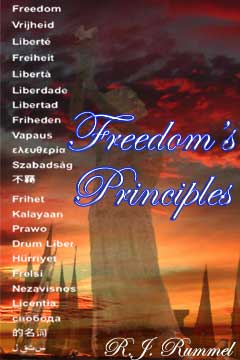Understanding the Spontaneous Society
[First published July 25, 2005] In my blogs I’ have tried to lay bare the incredible ability of the spontaneous society, that between free people, to provide a social order that allocates goods, runs a family, rules a neighborhood, and governs the relationship among friends, and thus satisfies the desires and values of millions of people. How can this be? So many people, so many diverse interests, so many different values, and yet the spontaneous society, does all this automatically — seemingly untouched by human hands. Certainly, it does it much more efficiency, and with the greater happiness of the greater number, than does the command society.
And how do we understand the role of conflict and cooperation among individuals in such a spontaneous society where people are free to do whatever? Nobody is telling them what to do. Nobody is establishing the framework within which they can interact without conflict. In those social spaces where no boss, government official, or chairman rules, how can people get along? They do, and wonderfully — better than anyone can dictate. What achieves this is a universal process of conflict and cooperation I call the conflict helix. It is shown in the figure below. All its aspects are described in the chapters I’ve posted on my Freedom’s Principles blog, and that have been summarized in the chapter I just posted there.
In sum, the conflict helix is a general process whereby individuals in a free society establish and maintain the understandings, accommodations, and agreements that enable them to cooperate and satisfy their interests. Within this process conflict itself is a means through which they adjust to their different interests, capabilities, and wills; it is a trial-and-error, mutual learning process that achieves an accommodation of some sort between what they want, can get, and are willing to pursue. These accommodations, whether forced or negotiated, explicit or implicit, written or unwritten, constitute a social contract: a structure of expectations defining who owns, controls, influences, gets, or does what. And this structure of expectations is based on a balance of powers (such as the capability of individuals to persuade, bargain, use authority, threaten) achieved by the conflict, such as in a family who chooses the TV programs, takes out the garbage, does the dishes, or how this is decided (flipping coin?).
The social contract that is an outcome of such conflict is initially congruent with the balance of powers established between individuals and defines their social order: it establishes and permits cooperation between them and delineates for them an oasis of peace. Unfortunately, what individuals want, can, and will get changes in time and causes the balance of powers to shift away from the structure of expectations. As the balance becomes less congruent with expectations, a gap is formed between the social contract and the underlying balance of powers. As the gap gets larger it becomes an increasing source of tension until some trigger event surfaces the disparity between power and expectations; new conflict then erupts, as it often does between people who have lived together for a short time, and their structure of expectations — social contract — is disrupted.
This new conflict establishes a more realistic balance of powers and associated social contract; a new phase of cooperation and peace is determined. And eventually, this peace will likewise breakdown into conflict as for this structure of expectations a gap between power and expectations also develop.
Although this process seems cyclic–conflict to cooperation to conflict to cooperation, and so on — and unending, conflict actually can become less intense and frequent. As the two parties learn more about each other through successive conflicts and periods of peace and cooperation, and assuming no change in the fundamental conditions of their relationship, their conflict becomes less intense and shorter, their periods of cooperation more friendly and durable. Thus the helix is an upward spiral in learning as the relationship between individuals progresses through conflict and cooperation.
Link of Note
“Why is F A Hayek a Conservative” (1987 pdf) By Dr. Madsen Pirie
Pirie says:
If there were those who thought from Hayek’s earlier work that he wanted to distil the essence of liberty and use it to build a society anew, his later writing must have changed their opinion. Hayek seeks, as conservatives do, a spontaneous society in which individual actions produce an unplanned order. He rejects, with them, the attempt to construct a rational order and impose it upon people in place of their own decisions. He stresses, as they do, the value of culture in its broadest sense as a repository of wisdom greater than can be retained by any one mind.
Hayek recognizes that societies change; that is what evolution is all about. But it is evolution, not revolution which makes change take place successfully. This, too, is part of the conservative political tradition. In Hayek’s earlier works, we saw, as he did, the differences between his own outlook and those of conservative disposition. He saw the contrast between those who wanted to win back ground for freedom and spontaneity, and those who did not. In his later work we see how his ideas mesh with the political ideas which conservatives have stood for and worked for.
Hayek searched to find a name for the party which would represent people who thought as he did. His search is over. There already is a name for the party which stands for freedom of choice, and which seeks to preserve the spontaneity of outcome which those individual choices accumulate toward. It is a party which recognizes the role played by traditions and cultural inheritance in the safe evolution of society. It is the party which rejects the pretensions of central planners, collectivists, and advocates of a preconceived design. If Professor Hayek has avoided knowing it hitherto, he should know now that the name of this party is Conservative.
The name for such a party that Hayek sought is freedomist. See “Why the Freedomist Network?”
Social Fields and
Types of Societies



 Posted by rudyrummel
Posted by rudyrummel 






